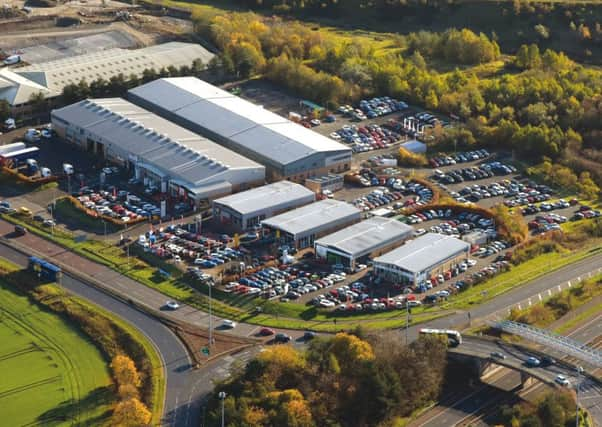Commercial property: Industrial assets sale sheds good light


Jamie Thain, investment partner at Galbraith, says the sale is indicative of the opportunities currently available in the industrial sector in Scotland.
The portfolio comprises eight assets, including industrial, trade-counter and motor-trade properties. The rent roll is in excess of £2.38 million per year providing a portfolio yield of approximately 8.25 per cent.
Advertisement
Hide AdAdvertisement
Hide AdThain says: “The portfolio captured the attention of investors from around the globe and it demonstrates the continued strong demand for the industrial property sector.”
He observes that there is a yield differential between the English and Scottish industrial sectors, saying: “Our view is that we see Scottish industrials as offering good value with properly priced risk premium compared to England where pricing has become somewhat inflated due to significant investor demand over the last couple of years.
“The supply in Scotland is historically low at the moment, it is well under 5 per cent across the Central Belt and is down to below 4 per cent in east-central Scotland. A significant proportion of stock is now obsolete – older warehouses that are less efficient than modern buildings.
“Efficient buildings across all sectors are what’s in demand, to satisfy business’s wider sustainability credentials.”
Thain adds that even though rents haven’t grown as fast as build costs of late, speculation is still a factor. “At Seven Hills Business Park in Sighthill [Edinburgh], around 70,000sq ft is being developed speculatively and has been forward sold. Smaller scale speculative developments in west Edinburgh have proved successful in the last year or so too, thus instilling further confidence in future projects”.
Indeed, market confidence is on the rise as the sector benefits from changes in consumer habits that are impacting retail more negatively. Thain says: “Simply put, as more and more people buy goods online instead of from shops there will continue to be increased demand for warehousing and distribution centres.”
As with all property, location is the key. Thain says: “Edinburgh is very tight from a supply perspective. Over the past decade many former industrial locations inside the bypass have been sold for redevelopment to higher value uses. Those that remain are therefore benefiting from this supply and demand dynamic and the resulting rental growth.”
This has led investors to look at areas like Livingston, where obsolescent stock is being redeveloped. “Meanwhile, inner city trade parks, those estates housing plumbing and electrical supplies, such as South Gyle Crescent in Edinburgh and Kingston Bridge Trading Estate in Glasgow, have seen rents grow from £7.50 per square foot a couple of years ago, to £9.50 to £10.”
Advertisement
Hide AdAdvertisement
Hide AdThese locations are also in demand from the ‘last-mile delivery’ logistics firms. Thain notes: “Larger logistics depots are looking for connectivity to the motorway network but also to be located near to a labour supply because they are finding it increasingly difficult to recruit staff – even an automated warehouse needs workers.”